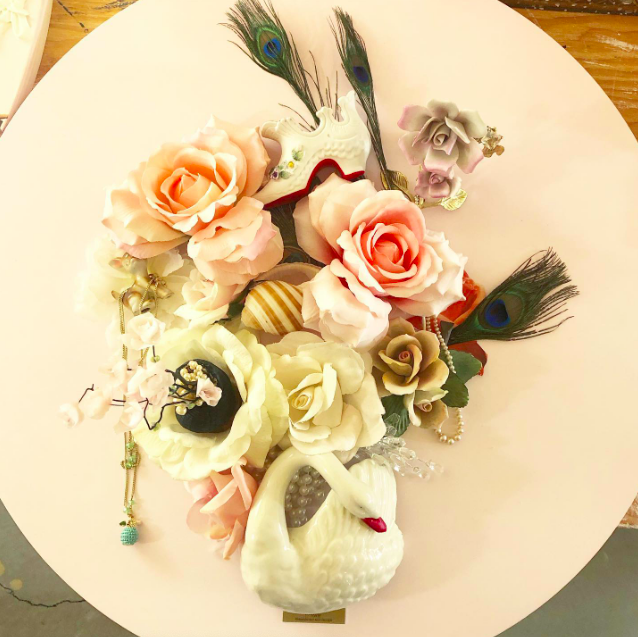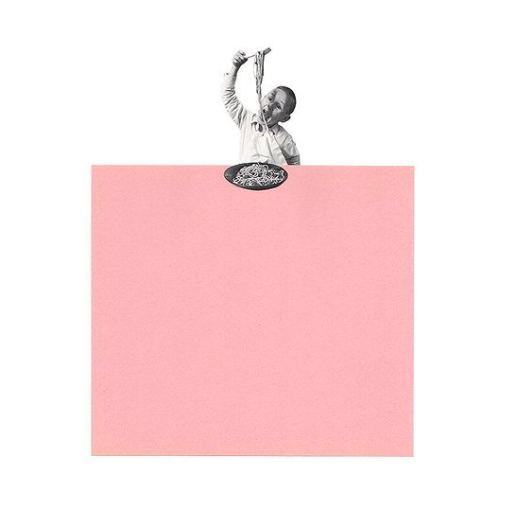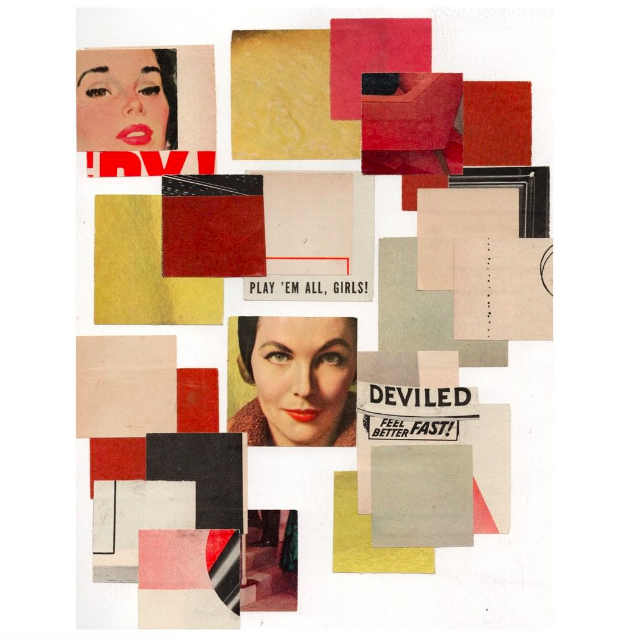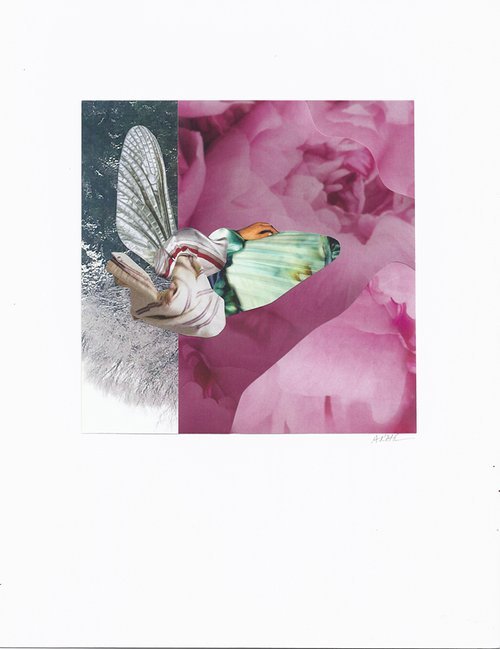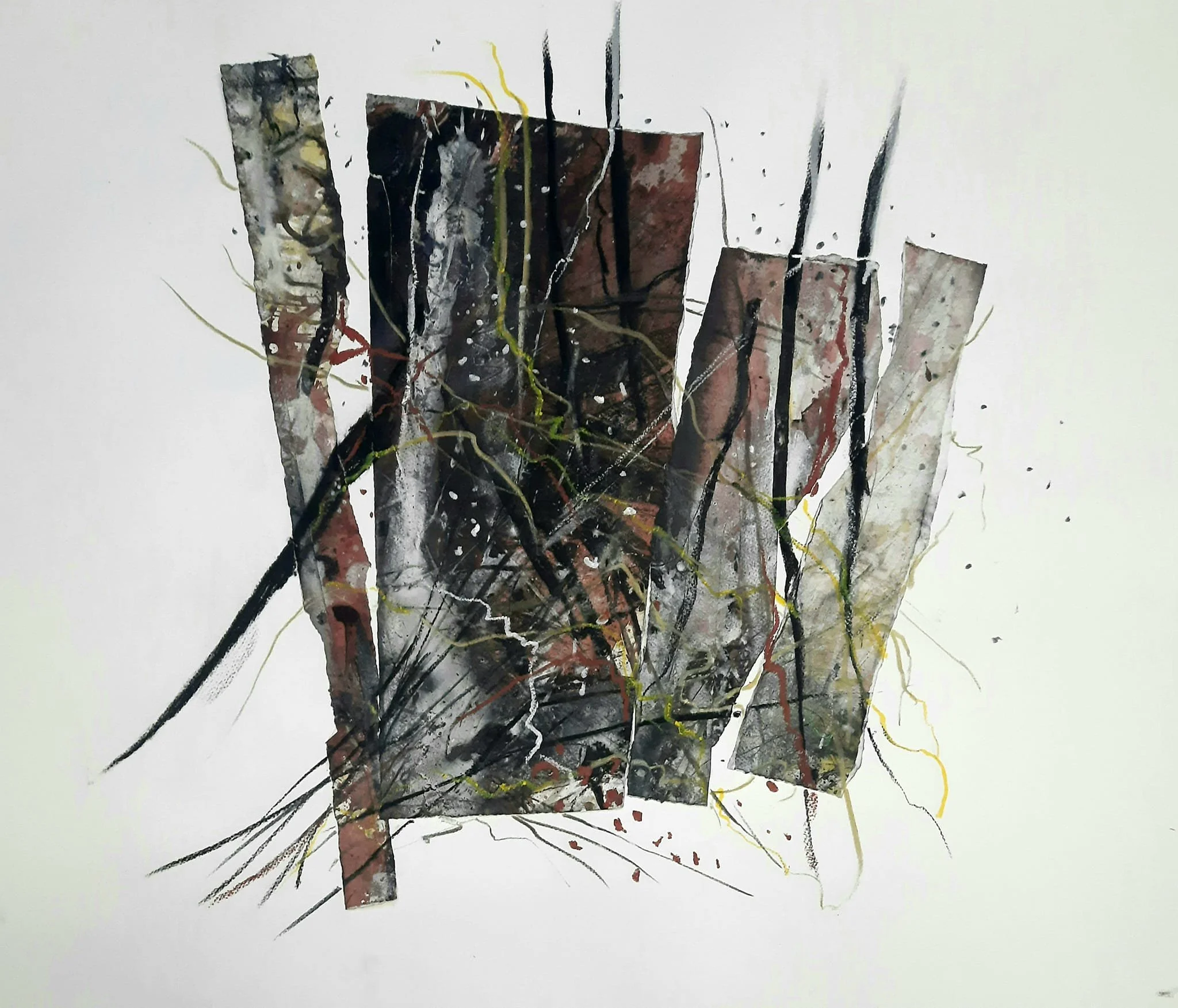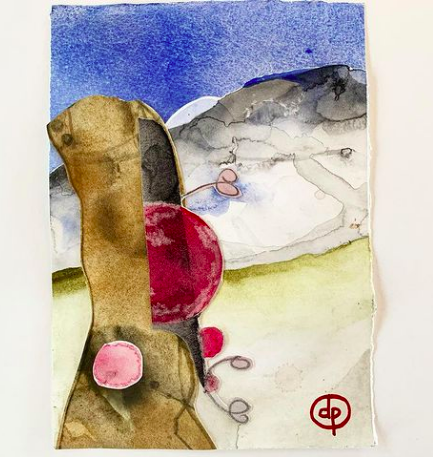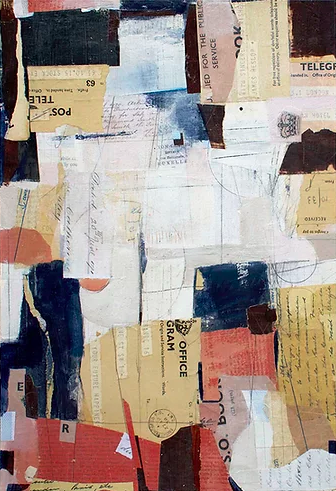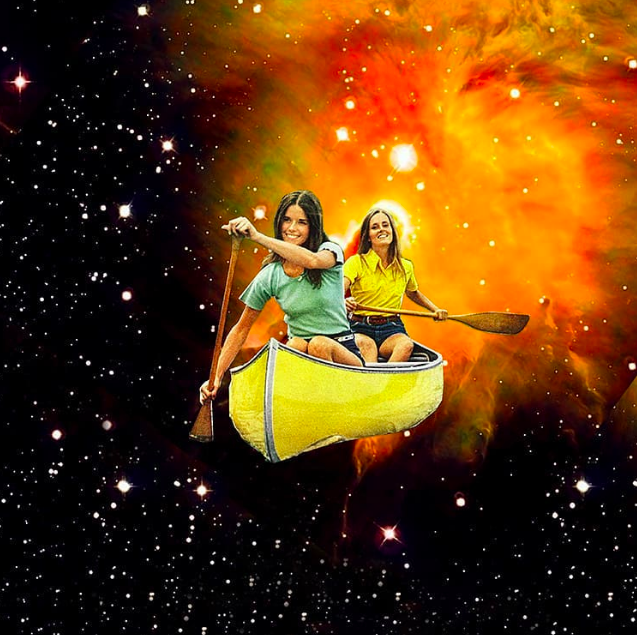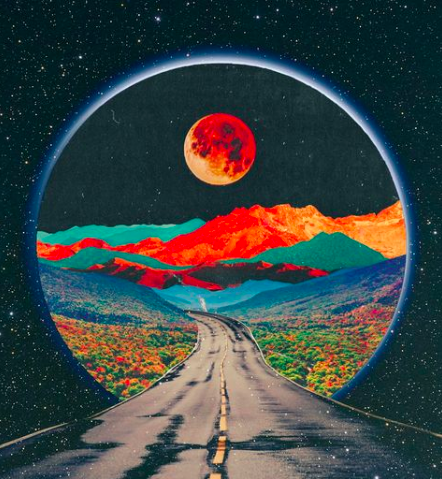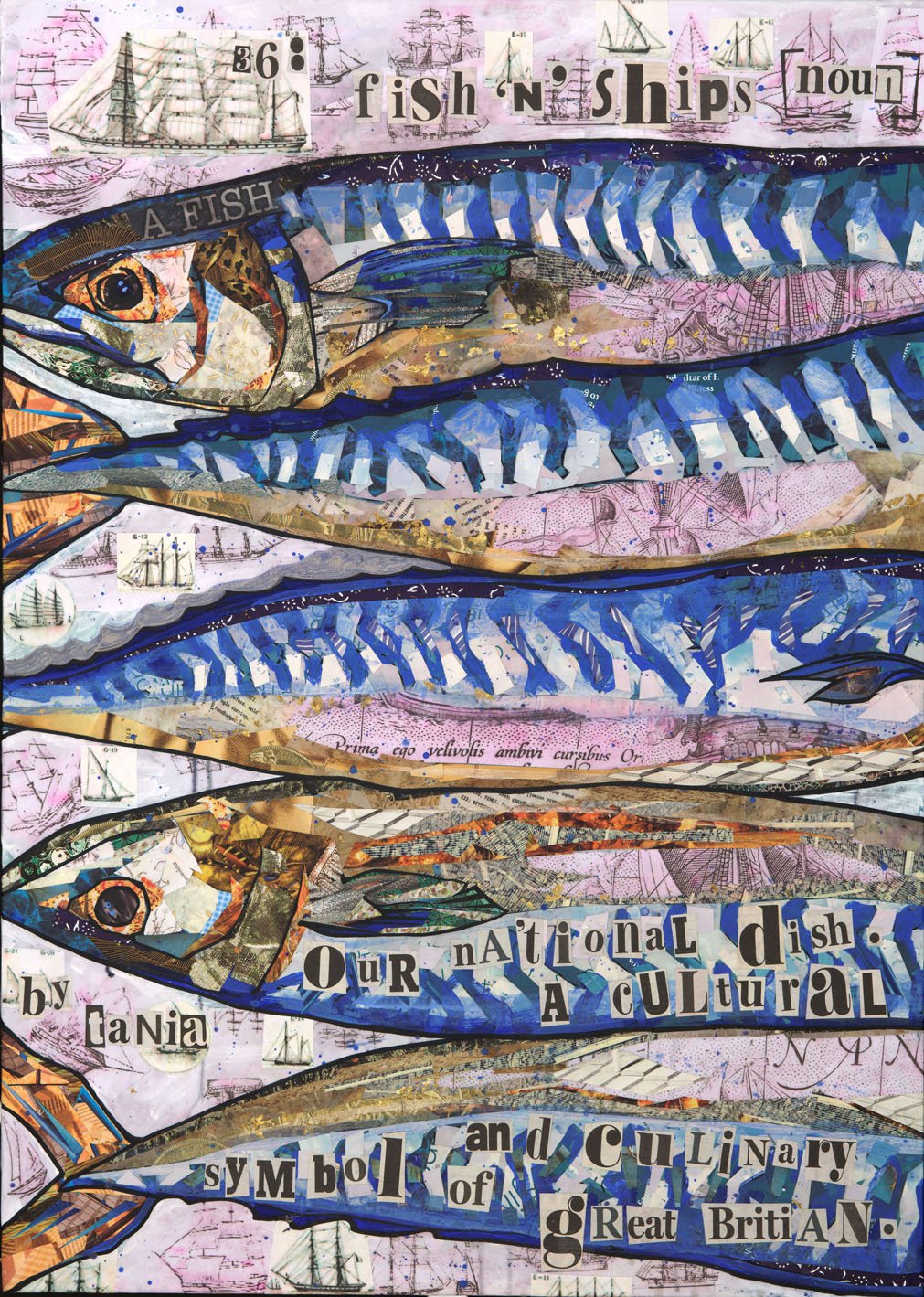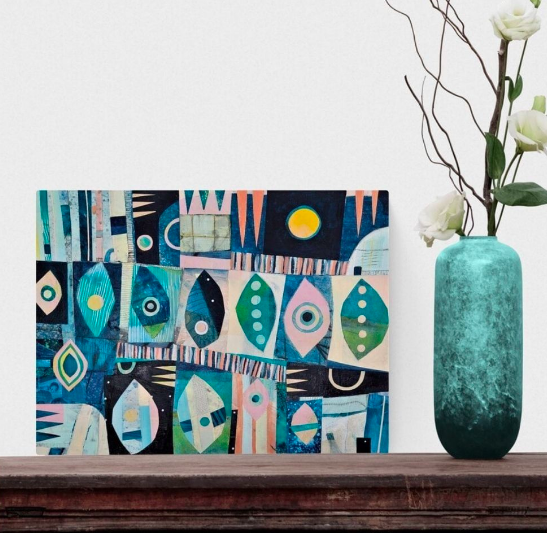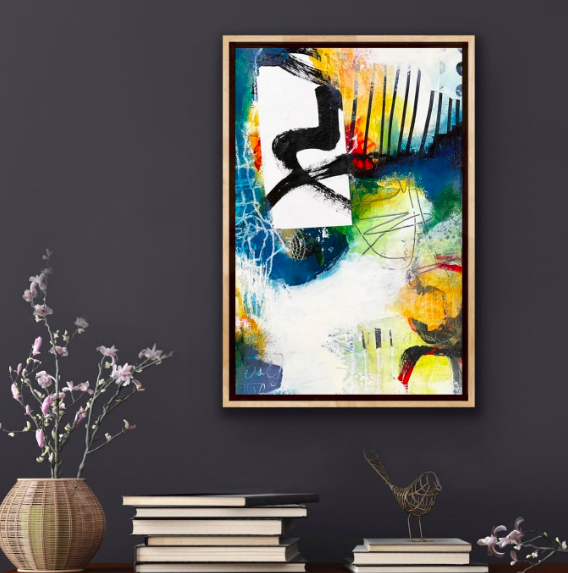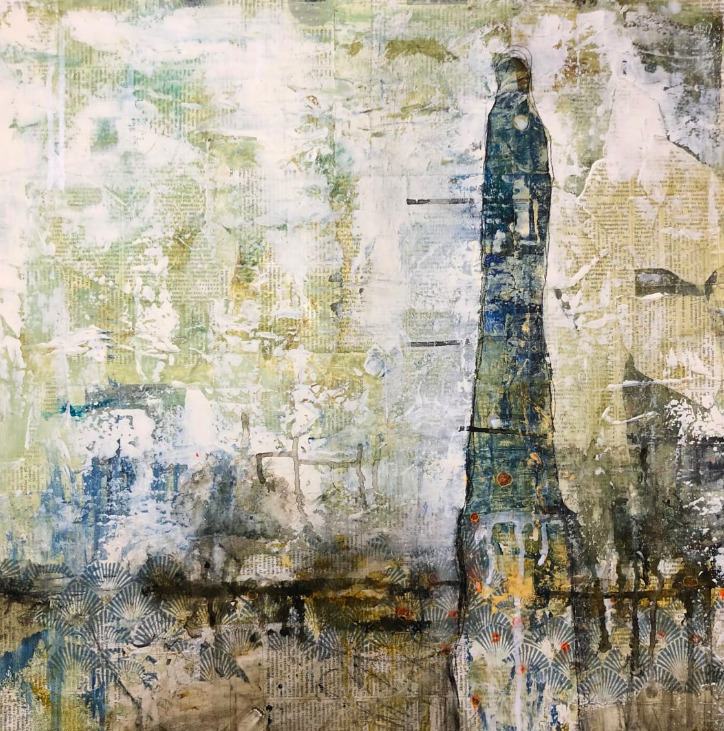Types of Art to Try if You Don't Know How to Draw #1: Collage
You don’t have to be able to draw to make art!
Do you love art, and want to try it but are intimidated because you “can’t draw”? It’s one of the first things I hear from people when I introduce myself as an artist or art teacher. Many people loved making art as kids, but then somewhere along the line, they felt their skills fell short and they stepped away from it. Art can be intimidating! Especially in a classroom environment where there’s always those few star students that can draw ANYTHING, with seeming effortlessness.
You’ve all seen the guy at the party, drawing portraits in 10 minutes. The art students in the park, sketching out every building, tree, and leaf. The cousin who does pet portraits as a side gig. You think “well, I can’t do that, I guess I can’t be an artist.”
OK, let’s just let those guys go and have their own classroom, and we’ll hang out. We like making things, we want to play with art materials, but what do we do?
Self Portrait, 2017 collage on Bristol board, Heidi Horchler
Collage
When I was in high school and my early twenties, collage was a fun, easy form of self expression that was also a way of “archiving” my favorite images from magazines and other print media. Have you ever been flipping through a magazine, and an image or text made you stop and look twice? Just the visual pleasing aspect of a type design, editorial layout, or a model’s striking expression or body language can make you forget what you were reading or daydreaming about, and you get lost in the image.
Many times, these images and text can be repurposed to illustrate something that you’re feeling, or they remind you of a friend. Collage is such a great way to take that expression and make it your own, new original piece of art!
Collage can be incorporated into other art, such as a painting, or art journal. When you combine more than one medium* into one piece of art — say, paint, collage, colored pencil and marker — that’s what makes something Mixed Media.
Materials needed to make a Collage
There are a myriad of ways to incorporate collage, but for a basic version, you just need:
A substrate: something to which you will apply the collage. This can be a journal page; a canvas board; wood panel; canvas; or any heavyweight paper or board. In my video example, I’m using recycled cardboard boxes.
Collage items: Usually paper, from a magazine, flyer, poster, or vintage ephemera (old postcards, bookmarks, book pages, billing statements, etc., any kind of old paper material). You can also print items yourself, but test the ink fastness before using any kind of wet sealant like Mod Podge or acrylic mediums.
Glue: Glue sticks work well, and keep the paper from buckling. Mod Podge (found in the craft aisle), or Elmer’s glue mixed with water; or acrylic glazing mediums (in the fine art painting aisle of the craft store).
Scissors or X-Acto knife. If using a knife, you’ll need a cutting mat or heavy cardboard to protect your table/desk surface.
Vision Board collage on 12x16”canvas board panel, 2012 by heidi horchler
Basic Method for Collage
The first thing you’ll do is cut out all of your images. You can be as detailed as you like, but try not to get too caught up on getting every little fine detail. You might want to have a file folder, shallow tray, or envelope handy to collect all your cutouts and keep them organized.
Cover your work area with scrap paper or newspaper.
Before gluing anything, try different arrangements of your pieces. You can use larger pieces for background (book pages, wrapping paper, scrap wallpaper, etc.) and arrange your focus images in an array on top.
Starting with your bottom layer piece, turn the paper upside down on your work surface and apply glue to the back. Apply glue from the center outward, being careful not to tear any delicate parts. You want your glue to go all the way to the edge, so this is why scrap paper underneath is important; you can extend the glue all the way over the cut edge of your piece. If using Mod Podge or liquid glue, use it sparingly because it will make the paper buckle (it might be worth doing a test piece just to see how your glue/paper combo will react. The thinner the paper and wetter the glue, the more it will wrinkle).
Carefully align the image over your substrate, and press in place from the center outward for a detailed piece; or from the top down for a larger background. You might have to re-apply glue to the edges as you go, that’s normal (especially in a dry climate like Arizona!)
Continue this process until you have all your collage pieces in place.
Tips for Collage
It can get messy! Have damp paper towels on hand to keep your fingertips from getting too gummy.
Work large-to-small, this will help keep glue from getting on the front of your pieces as you apply it.
If using wet media, you will have wrinkles/buckling. It’s a matter of trial & error, and patience. Practice with scrap pieces first so you can get a feel for it!
You will tear/ruin some of your images. It just happens! You can always cover any mistakes with a different image ;)
You might choose to seal your piece with a final finish, but most of the time this is not necessary, and it can cause more buckling. Test a scrap piece to see if it’s worth it before sealing the entire piece. I seal my collaged pieces on my large paintings, but not small collage pieces.
Play around with different sizes, visual texture, words, and composition. There is no end to the possibilities when using collage!
Why Collage?
It’s fun and easy enough for kids through adults
It’s a great activity to do with a friend, or to make a gift for a friend
It’s great for homeschooling or project to do with your family
It’s an eco-friendly art, using recycled materials from magazines and discarded books (thrift stores are a gold mine for collage materials!)
It’s pretty inexpensive!! Yayyy we love saving $$$
the collage that changed my life, 1995 magazine pictures on grocery store posterboard heidi horchler.
One More Reason to Try Collage
Collage can be an excellent form of self care. When used as a thoughtful, guided exercise, it can be enlightening — waking up ideas and bringing a new awareness to your inner thoughts and desires. It can also be a meditative, purposeful act of releasing old ideas and emotions that are no longer serving you. What might seem a passive activity of collecting pictures and phrases is actually your inner voice telling you what it wants. You’ll find yourself collecting things that you’d no idea you even liked, and as you thoughtfully arrange the pieces in place, it can be like putting together a puzzle of yourself without even realizing it.
To make it a Vision Board, a more guided, thoughtful process, start with one of the following prompts or questions:
What do I want in my life for the near future?
What are my goals for work, career, family, creativity, or home?
What colors and images move me?
Allow yourself to be surprised! If you are stopped in your tracks by something you “normally” wouldn’t like, keep that image or phrase! Even if it doesn’t end up in the final piece, it can be something your inner voice wants you to consider.
What words and phrases make an impact?
What of the things I find are pulling me backwards and which are propelling me forward?
If you DO find yourself overwhelmingly collecting things that are bringing up negative emotions and memories from the past, use that as fuel! Make a collage out of all that negativity, and then ceremoniously DESTROY it!! Tear it into a million pieces! Put it through the shredder! Let your dog chew it up! BURN IT! Say Goodbye to the things that are holding you back.
This can be a very powerful exercise in moving on from negative past experiences and/or building a positive future for yourself!
Collage Tutorial Video
Here is a video I made showing exactly how to make collages on recycled boxes. The same method can be applied to collage on flat surface.
More Collage Artists
Check out these collage artists for more inspiration. Collage has endless possibilities! Click on the image to see more from the artists, & read more info below.
Danielle Krysa, aka The Jealous Curator (traditional)
Danielle is a Canadian collage and assemblage artist, author of several books for grown up and kid artists alike; blogger, and podcast host. Her show, Art for Your Ear highlights interviews with artists of all practices, media and methodology from all over the world.
Anthony Zinonos (traditional)
Anthony is a British collage artist and illustrator in California. His work has been featured by fashion brands, magazines and publishers worldwide.
Louise Fletcher (traditional)
Louise is an English artist, author, and teacher. Her paintings, often layered with collage, are inspired by nature, poetry and memory, and are evocative of deep emotion. Her book, Life Force, is a collection of her paintings based on the work of English poet Ted Hughes.
Sarah Z. Short (traditional)
Sarah is a US collage artist based in Rhode Island, and uses found vintage papers in her work.
ANN ROTH (traditional)
Ann is a Canadian artist who uses collage in her mixed media acrylic paintings, and is inspired by the natural world around her.
Barry Edwards (traditional)
Barry is an Irish fireman & painter who often paints on location in Ireland, and uses his own work that he tears up and reassembles into collage.
Dean Power (traditional)
Dean is an Australian landscape artist who uses the natural water on location (from a stream or pond, etc.) to paint his images, then often cuts and reassembles his own paintings into collages.
Sue Johnson (traditional)
Sue is an English mixed media artist who enjoys repurposing old books and vintage paper ephemera in her work.
Eugenia Loli (digital)
Eugenia Loli is a Greek collage artist, illustrator, and filmmaker in California, and creates surrealistic digital collages from scanned vintage magazine imagery. She has been published in multiple magazines, book covers, album covers and several retail brands.
Natasha Chomko aka Postwook (digital)
Natasha Chomko is the visual artist behind POST WOOK. Her self-taught process combines love of texture, color, and shapes to create nostalgic and surreal dreamscapes from the world and cosmos around us. By using art as a form of therapy, POST WOOK evokes emotion, trauma, and memories to reify experience into art. (via SuperRare)
Tania Holland (traditional)
Tania is a U.K. based artist working in sculpture, painting, and mixed media.
Charlotte Wensley (traditional)
Charlotte is an Australian painter and mixed media artist.
Jackie Schomburg (traditional)
Jackie is a US based mixed media artist.
Jenny Grant (traditional)
Jenny is a Mixed Media Artist living in Stockholm, Sweden.
Let me know if you have any questions about getting started, and/or send me pics of your projects!
Have fun!
xo, Heidi
Stay connected: sign up for my monthly (-ish) newsletter HERE.

